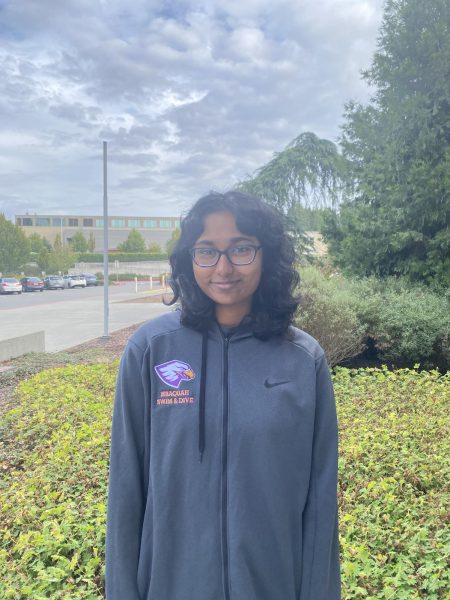Mirrored Worlds
January 30, 2023
4.5 billion years. 320,000 species of plants. 8.7 million species. Our planet is biodiverse and contains large variances in life forms. This is true for both plants and animals, with this large variety of species leading to an abundance of unique features, many of which are still unbeknownst to humans. Of discovered life forms, there is a multitude that has lesser-known attributes that scientists are still researching (though the “lack of knowledge” can vary depending on species).
An example of one of these animals would be the Elysia Chlorotica, or the Eastern Emerald Elysia, which is a photosynthesizing sea slug. According to Britannica, the slug gains its photosynthesizing capabilities by absorbing the chloroplasts of “Vaucheria litorea, yellow-green algae” into the slug’s digestive tract. With this absorption also comes the slug’s brilliant luminescent green color. Britannica writes that after consuming the algae, the slug can “continue to photosynthesize nutrients….for up to several months.”
Additionally, freshman Collin Tan says, “My favorite animal is the snow leopard because I think it is cool how it blends in with the snow.” Camouflage is a technique that both predator and prey can benefit from. Predators can use camouflage to stay out of sight from unknowing prey and sneak up on them, while prey use camouflage so that predators do not see them (and thus, are unable to hunt them).
Of course, there are still many unknown aspects of various species, or, at the very least, there is always more room for knowledge, but this is normal, as even in animal populations that humans have studied for generations, there are still many things scientists can still learn. Junior Riva Naidu says, “[The eastern sea slug] is interesting because normally we are taught that only plants photosynthesize.” Oftentimes, knowledge about animals is not taught in schools, leading students to gain information from media and other sources. Tan says, “I got most of my information from educational articles or magazines, like Smithsonian.” Other students may gain this knowledge in a more passive form, with Naidu stating, “I got most of my knowledge about animals from watching ‘Wild Kratts’ growing up. It was a show about two brothers who could transform into any animal, and they overall just taught viewers about whatever animal the two brothers would be that day. Watching it as a kid, I never really did it to learn about animals, I just liked the show, I thought it was fun.” Oftentimes, as students progress past primary school, they have less time to explore things they label silly and unproductive, but fun, so shows watched at younger ages may play huge parts in learning knowledge. Additionally, sophomore Andy Fleischman adds, “I learned a bit about dolphins in biology. It just got brought up one day.” Although schools may teach some information about animals, unless a student takes a specialized course such as Marine Biology, it is unlikely that they will divert the original course of study and go in-depth on animals.
The implications of greater knowledge of the animal world are large, with Fleischman saying, “It can help humans not overuse resources and cause harm to animal populations.” Maintaining a normal animal population is crucial in a healthy ecosystem. Naidu recounts the Yellowstone incident, stating, “A few years back, the wolf population at the Yellowstone national park was decimated, which led to barren fields and the entire makeup of the park dying. This was eventually solved once the Yellowstone staff took extra care and effort to re-introduce the wolf population.” Ensuring that all populations are maintained at a healthy level is crucial to sustainable living. Fleischman states, “I think technology and understanding of the natural world work side by side, and one cannot truly advance without the other.” Thus, tracking trends in nature benefits scientific innovation. Senior Ria Patil agrees with the fact that human technology is connected to the natural world, stating, “I think [technology] draws a lot of inspiration from it.” An example of this is SONAR technology, which mimics the sonar capabilities of bats. According to Deeptrekker, “SONAR (short for sound navigation and ranging) is a method by which sound waves are used to locate/map out objects and landscapes in the environment.” SONAR is used to map out terrains, often in areas where there is little light. This is both perfect for bats to move around in dark caves, and for humans to map out areas such as deep sea beds.
As our technology develops, society creates more and more useful innovations. Naidu says, “I’ve recently heard of genetically growing animal meat. If this was used to regrow organs, that could have a lot of healthcare impacts.” Technology plays a huge role in the medical field and in everyday life. Paying attention to trends in animal populations can result in technological innovation, elevating everyday life.


